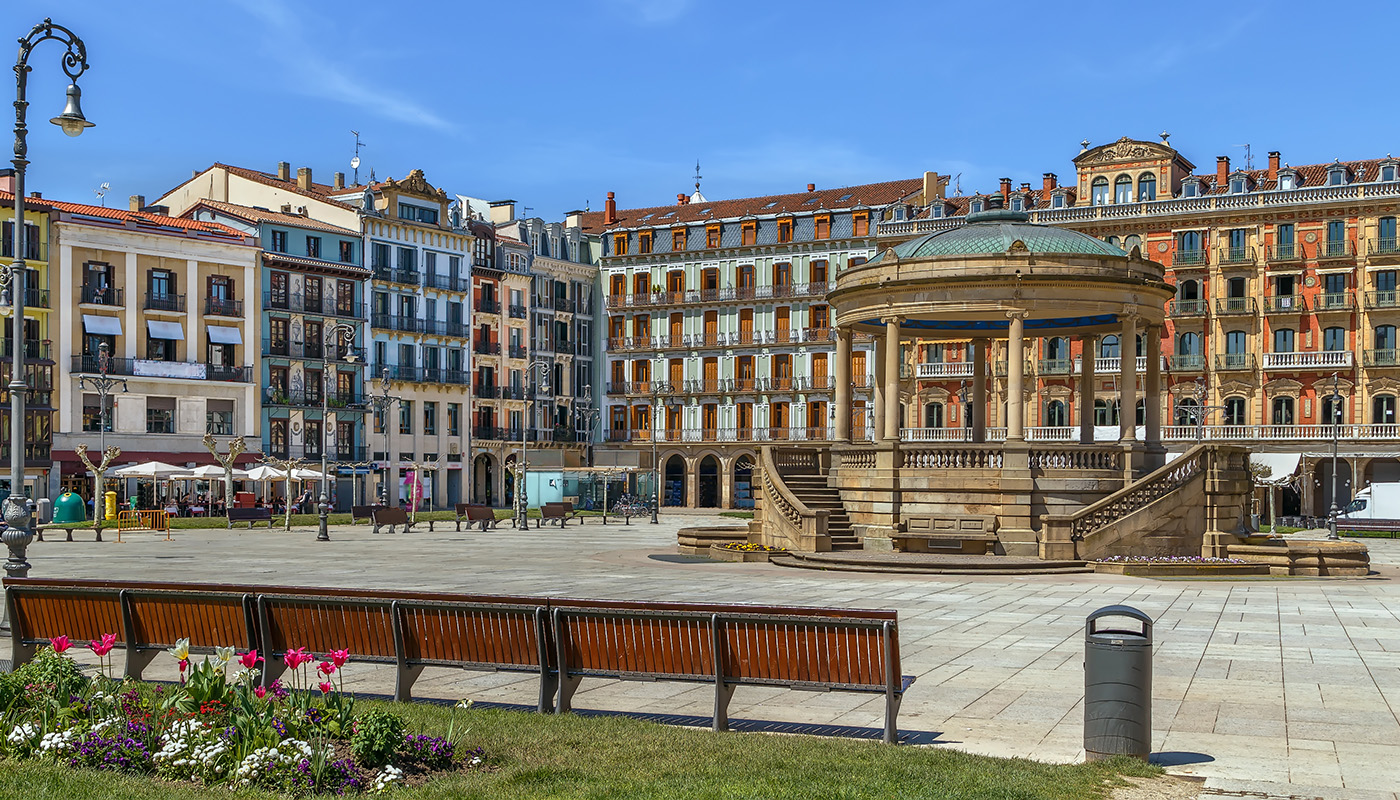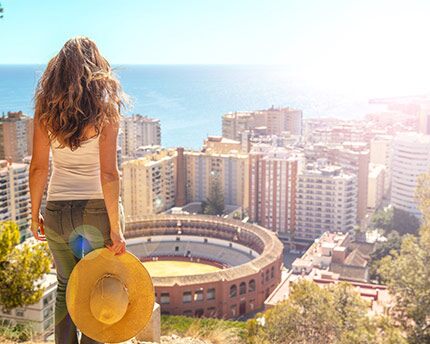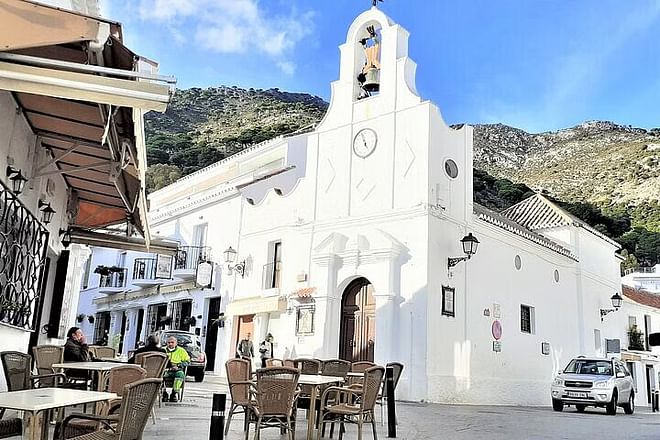Malaga province is packed with attractions and you’ll find activities to suit everyone, no matter their age or preference. City, villages, nature or coast, Malaga province has unique spots that should be included on your travel itinerary. So, start making a note of our selection of the best activities to do in Malaga.
Malaga is one of the main tourist destinations in Spain. In summer it’s a beach paradise for Spanish and European tourists, who flock to exclusive towns and small, charming villages. But it’s much more than just sun and sand, and Malaga province has many fascinating spots that combine history and nature. Read on to find out about the essential activities to do on a trip to Malaga.
Related experiences
Visit the Alcazaba and Roman Theatre
When you’re in Malaga city, visiting the Alcazaba is essential due to its historical importance – it never fails to surprise visitors. This small ‘Alhambra’ of Malaga is a spectacular fortress on the slopes of Mount Gibralfaro and has spectacular views out to sea. Built in the 11th century, it withstood a siege by the Catholic Monarchs when the city itself ultimately surrendered. Inside you’ll see walls, towers, gates, courtyards and a spectacular palace dating from the Nasrid period.
As you walk down from the Alcazaba, make a stop at the Roman Theatre which is found by the fortress walls. Malaca (the Roman name for Malaga) has endured until the present day in the form of this theatre which was only discovered in the middle of the 20th century. Dating from the age of Augustus, it’s well-conserved and the main sections that are still visible are the stands, the orchestra and the scaenae frons.
The two monuments combine so many centuries of history that it’s well worth exploring them with a guide on a tour that transports you to the Roman Empire and Al-Andalus.
Guided tour of the city
Malaga is a lovely city where you can enjoy a relaxing stroll around its streets. And what could be better than doing a guided tour of Malaga’s historic centre? That way you’ll get a better understanding of the city’s history and its main monuments.
The church where Picasso was baptised, Calle Larios, Pasaje de Chinitas, the Cathedral… The perfect walk to delve into Malaga’s past and discover fascinating and surprising facts about the city.
Caminito del Rey
Do you fancy a safe yet vertigo-inspiring adventure? Then add the Caminito del Rey to your list of plans. The famous walkways through a gorge, 100 m above the Guadalhorce River, have become a big tourist attraction since they were renovated in 2015.
The trail takes about three hours and you need to wear a helmet. The Caminito del Rey is in Ardales, about 60 km from Malaga city. You can get there by booking an excursion from Malaga with everything included so you don’t have to worry about a thing.
Trips to Setenil, Ronda and Frigiliana
Malaga province is much more than its capital city and there are several villages you should include on your list. Ronda and Setenil de las Bodegas, two of the province’s most emblematic towns, are in the west of the province, near the Sierra de Grazalema. Ronda is famous for its gorge, which is spanned by the Puente Nuevo [New Bridge], and also for its houses, walls and a bullring dating from 1785, one of the most famous in Spain.
Nearby Setenil de las Bodegas is a heritage site and is famous for its houses set into the rock of the the Guadalpurcón River gorge. You can visit Ronda and Setenil on an excursion from Malaga.
Another option is to head to the east of the province and visit Frigiliana, one of Malaga’s most famous white villages, which is included in the Most Beautiful Villages in Spain network. Get a feel for its Moorish past as you wander its narrow winding streets, climb its many stairs and visit the remains of the Arab castle.
Torcal de Antequera
El Torcal de Antequera is a particularly remarkable place in Malaga province and reveals just how extreme a karst landscape can be. The forces of nature have sculpted the land into the most surprising shapes – it’s no surprise that El Torcal has been made a heritage site. It’s close to Antequera, about an hour from Malaga, and you can visit El Torcal de Antequera on a guided tour from the city centre.
El Torcal de Antequera was formed 200 million years ago when what is now land lay beneath the ocean; the process of sedimentation and movement by the Iberian and African plates created the different strata that are visible today. The mysterious landscape was slowly shaped over time and can now be explored by hiking three different trails.
Whale watching
Malaga also means the sea and there are tons of activities to do on or in the water. One is booking a whale watching trip to spot dolphins, pilot whales, orcas and sperm whales. Set off on a boat that heads into the Gibraltar Strait from nearby Tarifa with a team of biologists who will share fascinating facts about these animals.
The Gibraltar Strait, Alboran Sea and Mediterranean Sea are sanctuaries for these species, which are an irresistible draw for sea life fans. If you’re lucky, you’ll spot pods of whales or dolphins from the boat. Have you ever seen a whale breaching up close?
Where to eat in Malaga
Food in Malaga inevitably specialises in fish, and anchovies, whitebait and sardines are all particularly popular – a dish of skewered sardines on the beach is virtually compulsory.
Also keep an eye out for restaurants including José Carlos García (Michelin star), El Figón de Juan and La Santa María, in Barceló Málaga. You can find out more in our blog post on where to eat in Malaga.
Where to stay in Malaga
If you’re planning a trip to Malaga, a fantastic accommodation option is the Barceló Málaga, a spectacular four-star hotel with a modern design located right in the train station. If you’d prefer to stay outside the big city, you could stay in towns such as Marbella, at the famous Barceló Marbella, or popular Torremolinos, where the Occidental Torremolinos Playa is right on the beach front.













































































